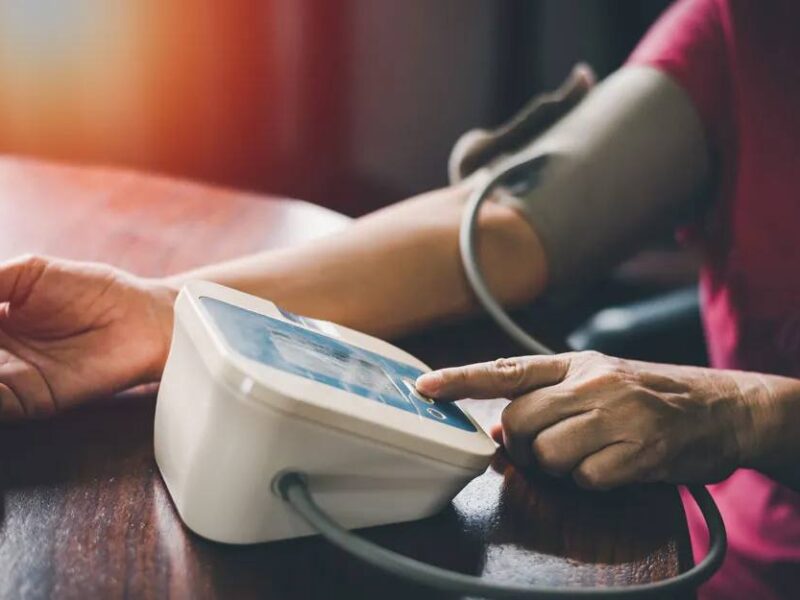Protecting The Most Vulnerable From COVID-19

Nursing home residents and staff account for nearly a quarter of known COVID-19 deaths in the United States, according to the U.S. Agency for Healthcare Research and Quality (AHRQ). An analysis by the Associated Press revealed that new weekly cases among nursing home residents rose nearly four-fold from early May to late October. Advanced age, underlying health conditions and communal living situations make residents especially vulnerable to the coronavirus, and necessary close contact puts essential nursing home staff at high risk.
In an effort to reduce these statistics in a time when cases are surging in many areas, Texas A&M University is training and mentoring nursing home personnel to better protect their residents and staff from COVID-19. The training is provided and funded as part of the new ECHO National Nursing Home COVID-19 Action Network created by AHRQ.
The A&M Rural and Community Health Institute (ARCHI) is one of 100 training centers in the network using the Project ECHO model of telementoring to engage U.S. nursing homes in free training and mentorship to enhance their safety practices. ARCHI, in collaboration with Texas A&M Health Family Care, is training personnel at 300 nursing homes across Texas.
“The Network is part of the Department of Health and Human Service’s nearly $5 billion commitment to supporting nursing homes in protecting both their residents and staff from COVID-19,” said AHRQ Deputy Director Dr. David Meyers. “The Network is built on AHRQ’s expertise in moving evidence and proven safety practices into action. We are pleased to be partnering with organizations such as ARCHI to ensure that every nursing home has the opportunity to learn both from their peers and from local experts.“
The program includes 16 weeks of standardized curriculum developed by the Institute for Healthcare Improvement (IHI). It is comprised of weekly 90-minute sessions that include lessons on nursing home infection control best practices, testing, treatment, personal protective equipment and other critical issues.
“Reaching out to health care facilities and their health care staffs is what we do,” said Dr. Nancy Dickey executive director of ARCHI and president emeritus of the Texas A&M Health Science Center. “The telementoring ECHO programs are becoming our core tools. So, when this project was announced it seemed tailor-made for us—meeting a need for an often-underserved group to improve outcomes and support their clinical staff.”
Presentations and discussions on systems issues, implementation challenges and patient cases are also offered. Throughout the program, ARCHI will provide ongoing help and foster a virtual community of participating nursing homes that support each other between teleECHO sessions.
The goals for the National Nursing Home COVID-19 Action Network are to:
- Prevent SARS-COV-2 (the virus that causes COVID-19) from entering nursing homes
- Identify residents and staff who have been infected with SARS-COV-2
- Prevent the spread of SARS-COV-2 between residents, staff and visitors
- Provide safe and appropriate care to residents with mild and asymptomatic cases of COVID-19
- Ensure staff members have the knowledge, skills and confidence to implement best-practice safety measures to protect residents and themselves
- Reduce social isolation for residents, families and staff
“It is our hope that by bringing expert information to the people and places that serve our senior population, fewer at-risk individuals will contract COVID-19, and fewer will die,” Dickey said.
Since 2003, ARCHI has been supporting small and rural health care facilities through a number of programs aimed at improving the quality and safety of health care. The institute has engaged hundreds of facilities and thousands of providers across the United States, improving access to health care and reducing disparities in health status and outcomes for those who live in underserved communities.
AHRQ, part of the U.S. Department of Health and Human Services (HHS), is the nation’s lead health services research and patient safety agency. Its mission is to produce evidence to make health care safer, higher quality, more accessible, equitable and affordable, and to work within HHS and with other partners to make sure that the evidence is understood and used.
This article by Lindsey Hendrix originally appeared on Vital Record.





